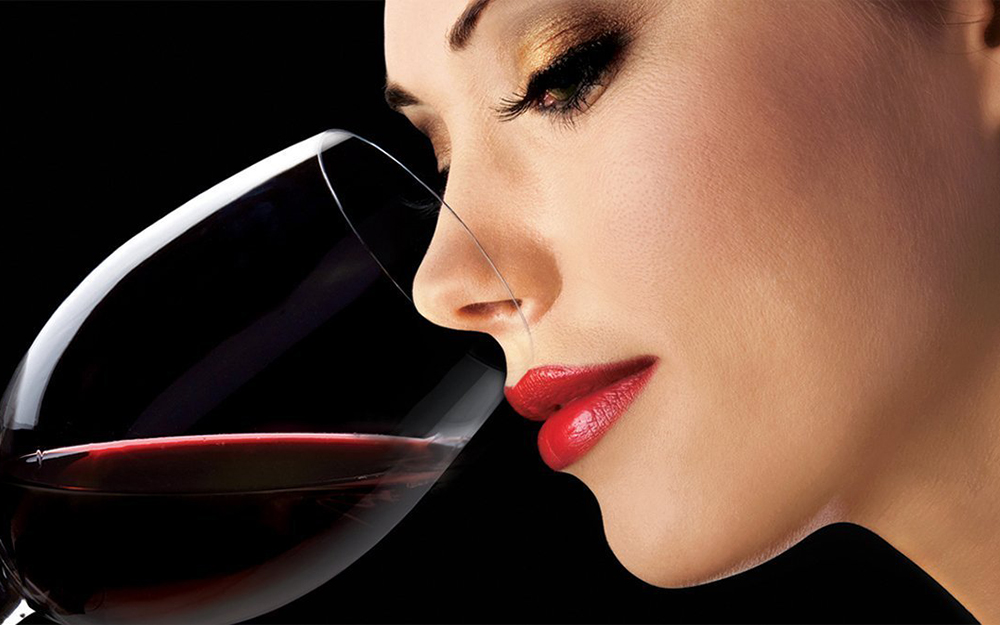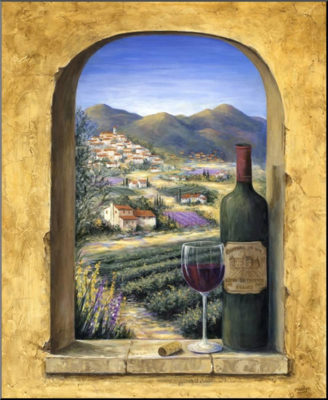
By Rick Riozza
The bouquet and the aromas of European wines are always interesting, quite often most alluring, and, at times with the great wines—staggering! Stopping one in their tracks or at least affecting a point in time where we are simply amazed at how the grape can offer us such a sensual relationship that lasts in our memories.
For us vino enthusiasts, it’s fun to think about how the ancient Greeks (who received their wine acumen from the sea-worthy Phoenicians) colonized the Italian peninsula and planted vines everywhere; then the Romans themselves infiltrated the rest of Europe, planting in Burgundy and Bordeaux only to see the wine quality of the wine reach astounding levels. Germany, Spain and the rest followed. Colonization and wine enjoyment went hand in hand. From Europe, wine went around the world.
But regardless of the timeline of one’s existence, when it comes to wine appreciation, after checking out the color and viscosity of the wine, the first major sensory blast and grand overture to any bottle we’re experiencing is the aroma coming from the glass.
Having just spent close to five weeks in European wine country, I had the luxury of spending some quality time with the wines that we’ve read about and studied from afar: The aromas and bouquet of the Hermitage Syrah, the Hungarian Tokaji Aszu, the Burgundian Pinot Noir, the Piemontese Barolo, the Chianti Classico Riserva and more, all contain sensual stories found in a lilt that transposes smells to songs.
Sorry—don’t know about all that, but surely the most eloquent part of the wine is its smell. The most sensitive bit of what we call our sense of taste is actually our sense of smell. Not to get too nerdy, but it’s the upper nasal cavity—where normal breathing never goes, that catches the wine vapors that have been inhaled and made to moisture where the sensations reach the olfactory bulb right in the brain.
All of us are aware of how smells stir memories far more rapidly and vividly than any other sensations. The olfactory bulb is right next to the temporal lobe where our memories are stored—thus there’s instant access to our memory bank. This explains why a 1983 Lynch-Bages Bordeaux comes to mind whenever I pull apart a pomegranate: it was the prominent fruit coming from that ‘83 château. Of course, if I’m lucky, that knowledge may buy me a cup of coffee.
At fun wine tastings, we always hear the proper question of whether a wine’s “aroma” and “bouquet” are synonymous. Serious folk and wine tutors often take the fun out of the tasting when they argue and attempt at length to distinguish the difference of terms.
“Just shaddup and drink already,” is the usual comment from around the table.
In my younger days, we learned that aromas are from young wines and bouquets are what come from mature wines. That can still kind-of work of sorts, but as you’d expect where one can get a college degree in wine appreciation, there are, at least, some distinctions in the two terms.
There may not be true scientific distinctions, but those in wine-speak will tell you that the terms can be useful to classify the origins of where the smells come from in wine. A wine aroma is derived from the grape variety, such as a Zinfandel or Pinot Noir; a wine bouquet is derived from the winemaking process of fermentation and aging. Thus, wine aromas are “primary flavors”, and the wine bouquet are “secondary aromas”.
 Aromas are commonly associated with the varietals: fruit flavors, herbal flavors, floral flavors. For those who know their favorite wines, for instance, we know already the standard aromas coming from a Cabernet Sauvignon: black currants, green peppercorns & mint, and maybe violets, lavender, and red roses. For a standard Zinfandel, the fruit expectation changes to blackberries, cocoa and black peppercorns.
Aromas are commonly associated with the varietals: fruit flavors, herbal flavors, floral flavors. For those who know their favorite wines, for instance, we know already the standard aromas coming from a Cabernet Sauvignon: black currants, green peppercorns & mint, and maybe violets, lavender, and red roses. For a standard Zinfandel, the fruit expectation changes to blackberries, cocoa and black peppercorns.
Wine bouquets are the other smells, apart from the fruit, and more from fermenting: yeast, spice, nut aromas; milk, butter, cream, mushrooms; grandma’s cellar, horse sweat, barnyards, band-aids, wild game, duck cracklings, and things off the chart. Aging gives the bouquet of oak, sugar, caramel; clove, cedar and cigar box; smoke, dried tobacco and dried leaves.
All that being said, we get aromas from simpler wines; and bouquets from very good to great wines. I know—enough already, just shaddup and enjoy.
Of course, every great wine region in the world produces wine with stellar aromas and wonderfully brilliant bouquets. We started first with Europe because, as mentioned earlier—the great wine stocks and their sophisticated winemaking directly affected the world. As I continue with the column this year, I’ll occasionally mention some of the great wines we’ve enjoyed.
For you Syrah fans, perhaps it’s on your bucket list to experience a Hermitage Syrah.
They are the richest, silkiest, and sturdiest of wines. The flavors go on forever and the prices unfortunately follow. There is limited bottling a bottle of wine as there are only 331 acres on this one notable hill. The bottles on average go for around $500 +.
It’s best to make an appointment with one of the few wineries there to get a taste in. Fortunately, the wineries do a good job of supplying the local restaurants in every vintage, so one could at least get a great glass of wine.
Tain is at the foot of the Hermitage hill, the most famous appellation in the Rhône Valley, and arguably the most beautiful as well. This cru rises some 600 feet above the valley floor like a camel’s hump. Hermitage wines were served in the royal courts of Europe in the 17th century, and Thomas Jefferson purchased hundreds of bottles after visiting Tain in 1787.
The wines are of course elegantly fruity with notes of bacon, blackberries, black currants, black pepper, chocolate, earth, game, leather, meat, plums, smoke, spices, tar, and tobacco. An amazing quaff! Cheers!










































